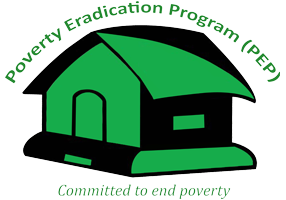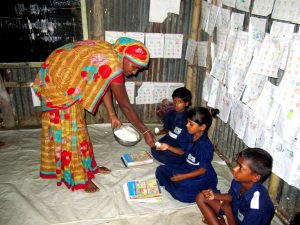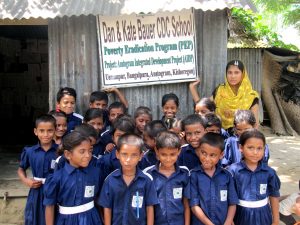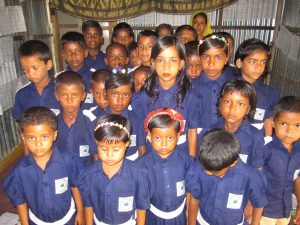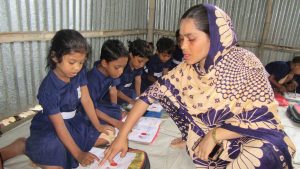Child Development Center (CDC)
Educating children contributes to building a better society for tomorrow. PEP has designed a non-formal primary education (NFPE) component in which the community and PEP work as partners to ensure that the schools operate successfully. The first Child Development Centers (CDCs) opened in 1991 at the Dhunot Integrated Development Project (DIDP).
Primary objectives of CDC:
- Reduce mass illiteracy and contribute to the basic education of a significant proportion of the country’s children, especially those from the poorest families
- Ensure enhanced participation of female children
- Build a strong foundation of ethical values
- Enhance the potential of education in other areas such as care for the environment, public hygiene, and health
- Contribute to strengthening the government’s education program – “Education for all”
- Provide nutritional help to the children so they have energy for learning.PEP workers start by identifying possible locations for one-classroom schools near a sufficient concentration of poor families. The importance of primary education is stressed at meetings with identified communities. Each community is informed that, if willing to begin a school, PEP will educate their children. The development partners must select the land, arrange a suitable thatch or tin classroom, and form an eight-member managing committee from among the mothers of the children. PEP then recruits an educated local woman as a teacher. PEP trains her, supplies the teaching and learning materials, ensures daily nutritious food and monitors the quality of education in the classroom. To cover the maximum number of children, PEP provides 2 years of education–motivating parents to provide at least 3 more years of schooling to each child at nearby government primary schools.CDC schools are tuition free and provide a teacher, workbooks, supplies and a daily nutritious snack in a one-room schoolhouse for 30 students; of them at least 55-60% should be girls and rest 40-45% boys. The curriculum is based on government educational standards but adds song, dance, art, exercise and play to introduce local culture, build teamwork, develop self-confidence and foster healthy lifestyles. Upon completion of the two-year program, graduates qualify for entrance into the government school system in the third grade.In 2017, there were 1,620 children received quality education in 54 schools through its Child Development Center (CDC) program and 1,080 graduated (completed 2nd year studies) from 36 schools. A total of 92,981 children have completed the first two years of primary education (graduated) since 1991 and 540 students are studying in 2nd grade in 18 CDCs.
